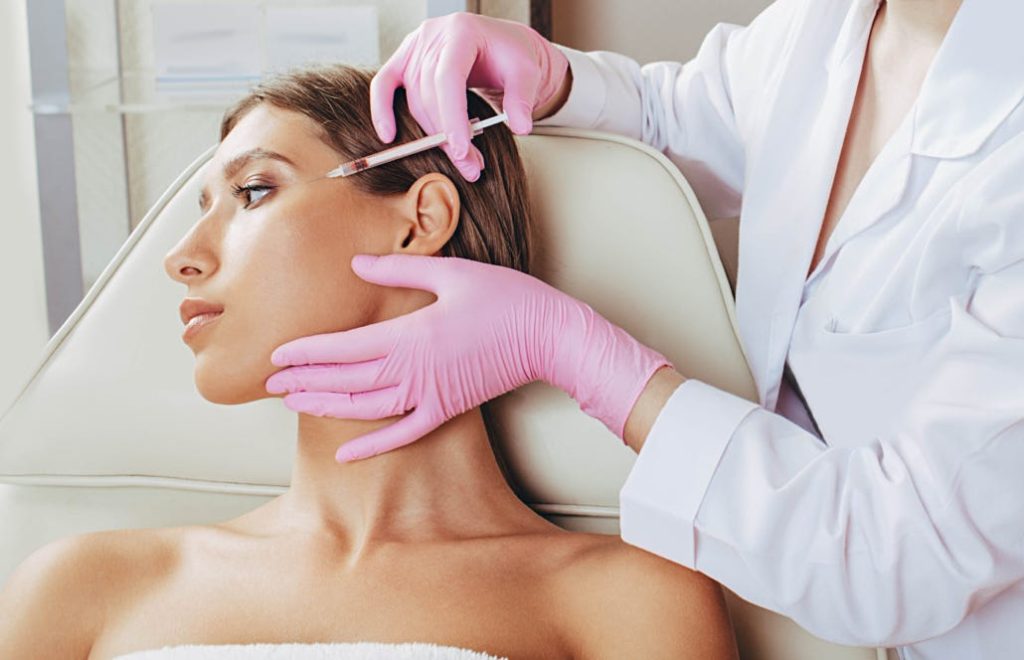Innovations in Medical Aesthetic Services for Facial Rejuvenation
The field of medical aesthetic services for facial rejuvenation has witnessed a remarkable surge in innovations, propelled by advancements in technology and an increasing demand for non-invasive cosmetic procedures. These innovations have revolutionized the way individuals approach facial rejuvenation, offering safer, more effective, and minimally invasive alternatives to traditional surgical interventions. One of the most significant developments in this realm is the widespread adoption of laser and light-based therapies, such as laser resurfacing and intense pulsed light IPL treatments. These modalities utilize targeted energy to address a myriad of concerns, including wrinkles, fine lines, pigmentation irregularities, and even acne scars, with minimal downtime and discomfort. Moreover, the advent of injectable treatments, particularly neurotoxins like Botox and Dysport, and dermal fillers such as hyaluronic acid-based products, has dramatically transformed the landscape of facial rejuvenation. These injectable offer quick and relatively painless solutions for softening dynamic wrinkles, restoring lost volume, and sculpting facial contours, all without the need for surgery.
Furthermore, advancements in formulation and delivery techniques have led to more natural-looking results and longer-lasting outcomes, enhancing patient satisfaction and confidence. Another groundbreaking innovation in medical aesthetics is the emergence of regenerative therapies, including platelet-rich plasma PRP and stem cell-based treatments. PRP therapy involves harvesting and concentrating platelets from the patient’s own blood, which are then reintroduced into the skin to stimulate collagen production, improve texture, and promote tissue regeneration. Similarly, stem cell therapies harness the regenerative potential of stem cells to rejuvenate aging skin, replenish lost volume, and accelerate healing, offering a promising avenue for long-term facial rejuvenation. In addition to these technological advancements, there has been a growing emphasis on personalized treatment approaches tailored to each individual’s unique facial anatomy and aesthetic goals. This shift towards a more customized approach is reflected in the rise of comprehensive facial assessment techniques, such as 3D imaging and computerized facial analysis, which allow practitioners to precisely evaluate facial symmetry, volume distribution, and aging patterns and visit website.
 By gaining a deeper understanding of each patient’s specific needs and aspirations, clinicians can develop bespoke treatment plans that optimize outcomes and ensure natural-looking results. Furthermore, the integration of artificial intelligence AI and machine learning algorithms into aesthetic practice has opened up new possibilities for predictive modeling, treatment planning, and outcome optimization. These technologies enable practitioners to analyze vast datasets of patient images and treatment outcomes, identify trends and patterns, and refine treatment protocols to achieve superior results with greater efficiency and accuracy. From virtual simulations of potential treatment outcomes to real-time feedback during procedures, AI-driven tools empower clinicians to deliver highly personalized and precise interventions, further elevating the standard of care in facial rejuvenation. The ongoing innovations in medical aesthetic services for facial rejuvenation represent a paradigm shift in the way we approach aging and cosmetic enhancement. By leveraging cutting-edge technologies, personalized treatment approaches, and interdisciplinary collaborations, clinicians are able to offer safer, more effective, and more satisfying solutions for patients seeking to restore youthfulness and vitality to their appearance.
By gaining a deeper understanding of each patient’s specific needs and aspirations, clinicians can develop bespoke treatment plans that optimize outcomes and ensure natural-looking results. Furthermore, the integration of artificial intelligence AI and machine learning algorithms into aesthetic practice has opened up new possibilities for predictive modeling, treatment planning, and outcome optimization. These technologies enable practitioners to analyze vast datasets of patient images and treatment outcomes, identify trends and patterns, and refine treatment protocols to achieve superior results with greater efficiency and accuracy. From virtual simulations of potential treatment outcomes to real-time feedback during procedures, AI-driven tools empower clinicians to deliver highly personalized and precise interventions, further elevating the standard of care in facial rejuvenation. The ongoing innovations in medical aesthetic services for facial rejuvenation represent a paradigm shift in the way we approach aging and cosmetic enhancement. By leveraging cutting-edge technologies, personalized treatment approaches, and interdisciplinary collaborations, clinicians are able to offer safer, more effective, and more satisfying solutions for patients seeking to restore youthfulness and vitality to their appearance.